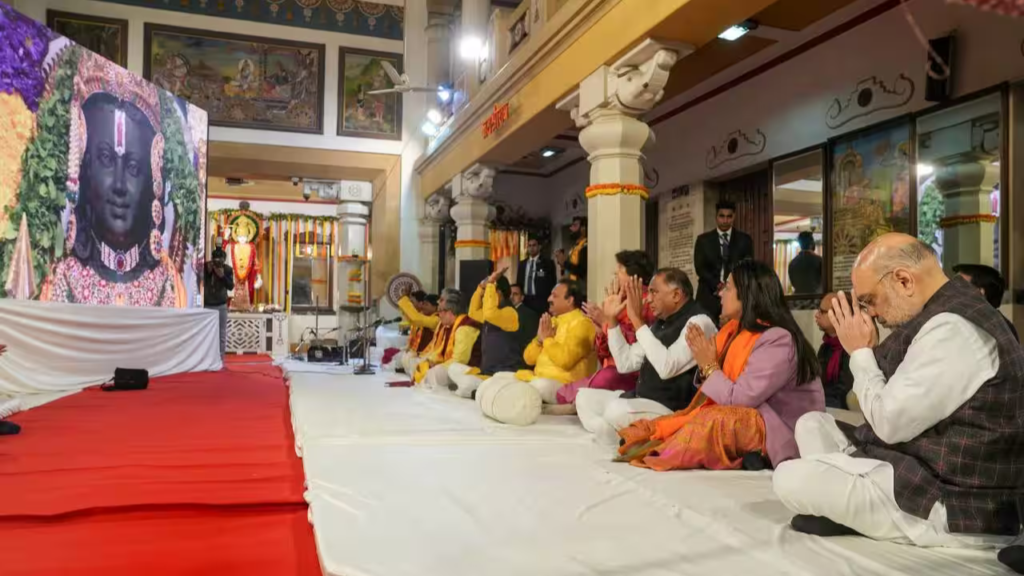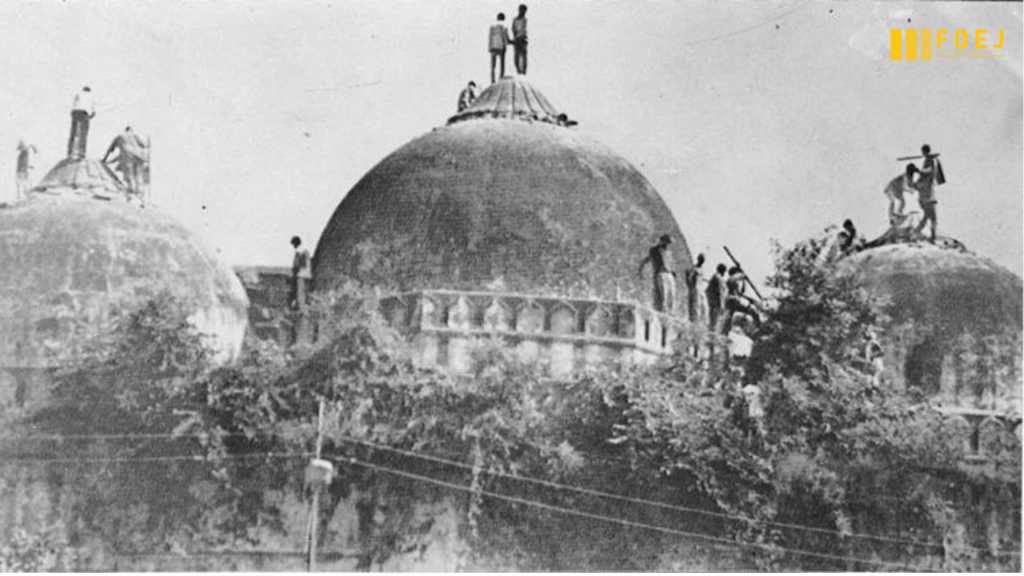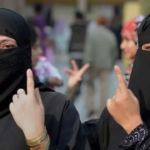Today in Delhi, the city witnessed an amalgamation of joy and sadness as it celebrated the historic consecration of the Ram Mandir in Ayodhya alongside various events and observances.
In Connaught Place, the heart of Delhi, vibrant festivities unfolded, with the iconic marketplace adorned in saffron Ram flags. The live telecast of the pran pratishtha ceremony from Ayodhya captivated a diverse audience, adding a touch of devotion to the atmosphere. Notably, a unique Ram puja featuring an 11-kg laddoo symbolised the significance of the day.

The business community actively participated, with markets such as Kucha Mahajani and Kamla Nagar optimising sales with unique strategies. Ayodhya gold rings and special discounts up to 10% on all items added a commercial touch to the celebratory atmosphere. Over 50 markets, including those led by Brijesh Goyal and associations like the Federation of Lajpat Nagar Traders and Kashmiri Gate Market, joined in with discounts.
Temples across Delhi were illuminated with lights and devotional activities. The ISKCON temple in East Kailash has showcased lights since January 20, culminating in one lakh ghee lamps. Birla Mandir performed Deepotsav, and temples like Kalkaji Mandir and Jhandewalan orchestrated grand celebrations.

Simultaneously, Defence Minister Rajnath Singh and other political figures marked the day with religious observances. Singh offered prayers at Shri Sanatan Dharm Mandir, coinciding with the Ayodhya ceremony.
Delhi Chief Minister Arvind Kejriwal’s active participation in bhandaras underscored the secular spirit. Top BJP leaders, including J. P. Nadda and Amit Shah, engaged in celebrations by watching live streams and visiting temples. University students from Delhi University and JNU played a significant role in commemorating the event.
From Whispers to Noise:
In a contrasting scene, heightened security around Jama Masjid aimed at ensuring a peaceful day in the diverse capital, which brings us to the journey that began with whispers in the 1980s and now, in 2024, unfolds with the consecration ceremony of the Ram Temple with the noise of celebrations for the Hindu Community of India. Let’s dive into this rollercoaster ride that shaped the destiny of Ayodhya.

The year was 1528 when a grand structure called the Babri Masjid was constructed in Ayodhya by Mir Baqi, following the orders of the Mughal emperor, Babur. By 1855, the claim by Hindus about the Ram Temple gained popularity and in 1859, a fence was erected around Babri Masjid and Hindus were permitted to worship in the outer court of the mosque, establishing a delicate balance between the two communities.
From 1986–1990:
In the mid-1980s, things got interesting when the Rashtriya Swayamsevak Sangh (RSS) asked the government to give the disputed land in Ayodhya to the Ram Janmabhoomi Trust. It was like a call for a grand Ram temple, inspired by the historic Somnath temple in Gujarat. The political drama heated up, with the Bharatiya Janata Party (BJP) officially joining in 1989.

Then came a game-changer: L.K. Advani’s yatra from Somnath to Ayodhya in 1990, shouting for the Ram Temple. Even his arrest in October couldn’t stop the enthusiasm. In December 1992, the Babri Mosque was demolished, shaking things up despite promises to the Supreme Court.
Legal Battles and Communal Unrest (1992–2011):
The aftermath was like a storm, with communal riots echoing across India. The government grabbed 67.7 acres in Ayodhya, including the disputed spot, in 1993. The legal battleground opened with charges against Advani and others in 1993. The Supreme Court backed the land acquisition in 1994, and the Archaeological Survey of India started digging in 2003.
In 2009, the Liberhan Commission’s report unveiled the pre-planning of the mosque’s demolition. The Allahabad High Court gave a groundbreaking verdict in 2011, splitting the disputed area between Hindus and Muslims. But the Supreme Court pumped the brakes in May 2011, suggesting an out-of-court settlement.

A Landmark Verdict and the Road to Construction (2019–2024):
The second game-changing moment arrived in 2019, when the Supreme Court favoured the temple’s construction at the disputed site. It directed the transfer of 2.77 acres to the Ram Temple Trust and gave 5 acres to Muslims to build a new mosque at another place after the complete demolition of the Babri Masjid. In February 2020, Prime Minister Narendra Modi announced the formation of the Ram Janmabhoomi Teerth Kshetra Trust.
August 2020 witnessed Modi laying the foundation stone for the temple, signalling a new chapter. The trust collected over Rs 5,500 crore in a nationwide fundraising campaign in 2022. Finally, today, the consecration ceremony of Ram Lalla’s idol, led by Prime Minister Narendra Modi, brings to us all the fading memories and the struggle of communal hatred.
The history of Ayodhya’s Ram Temple is like a journey, with its ups and downs, the ups to be celebrated by the whole nation and the downs engraved in the hearts for immortality.









